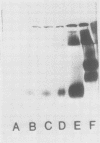Abstract
Antiserum was raised against a synthetic nona-peptide which was predicted to have considerable homology with the unhydroxylated, unglycosylated precursor of cell wall proteins from several plants. The antiserum is able to recognize the major cell wall protein of incubated carrot (Daucus carota) root discs which is produced when the discs are treated with a proline hydroxylase inhibitor and then labeled with radioactive proline. This technique has potential applications in studying cell wall biosynthesis and its regulatory control mechanisms.
Full text
PDF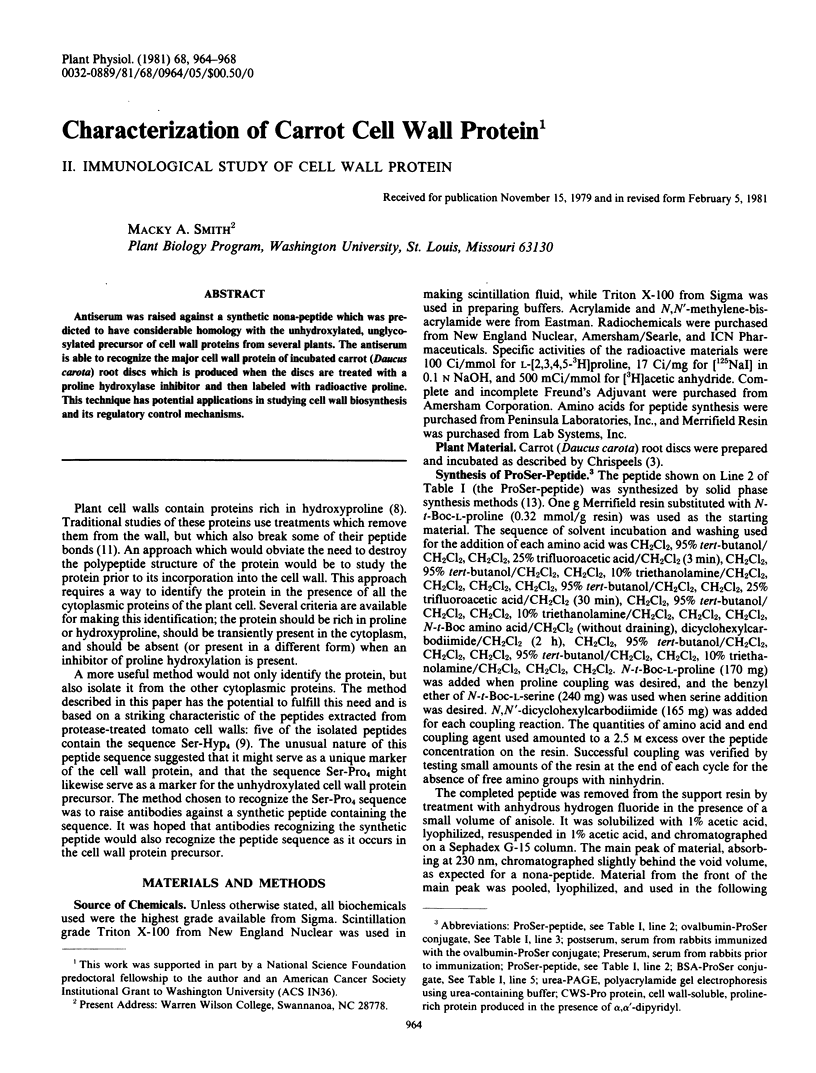
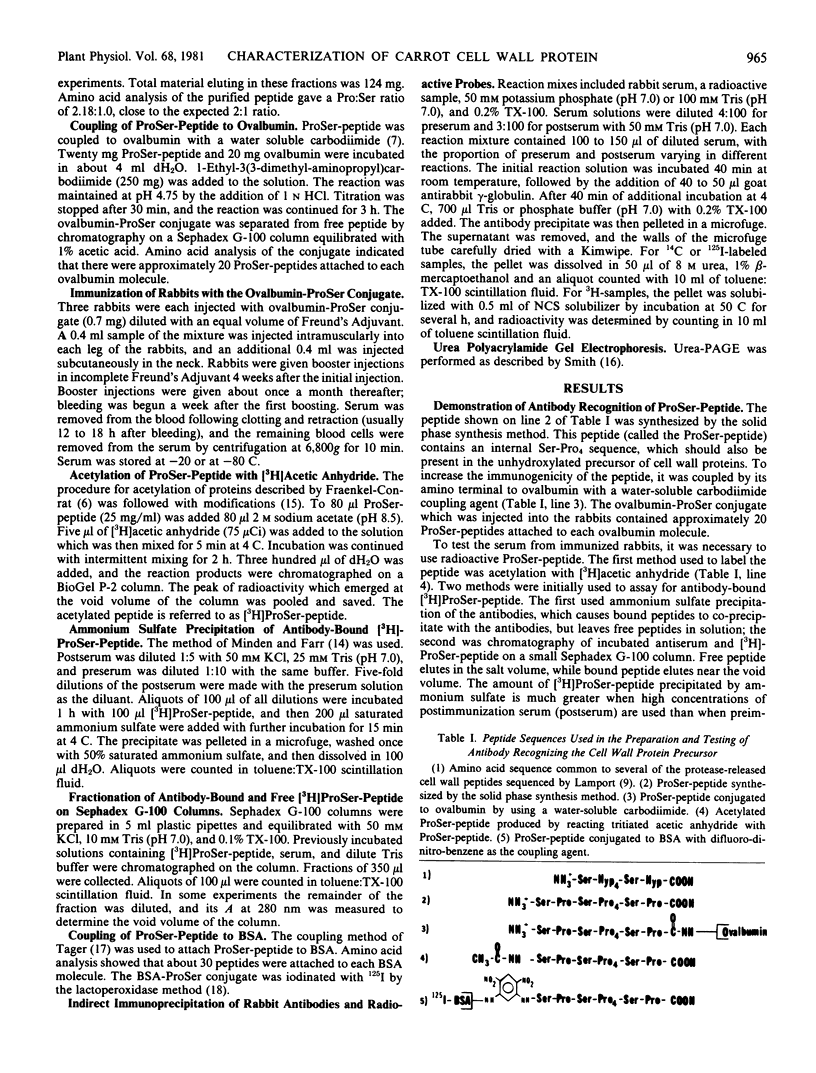
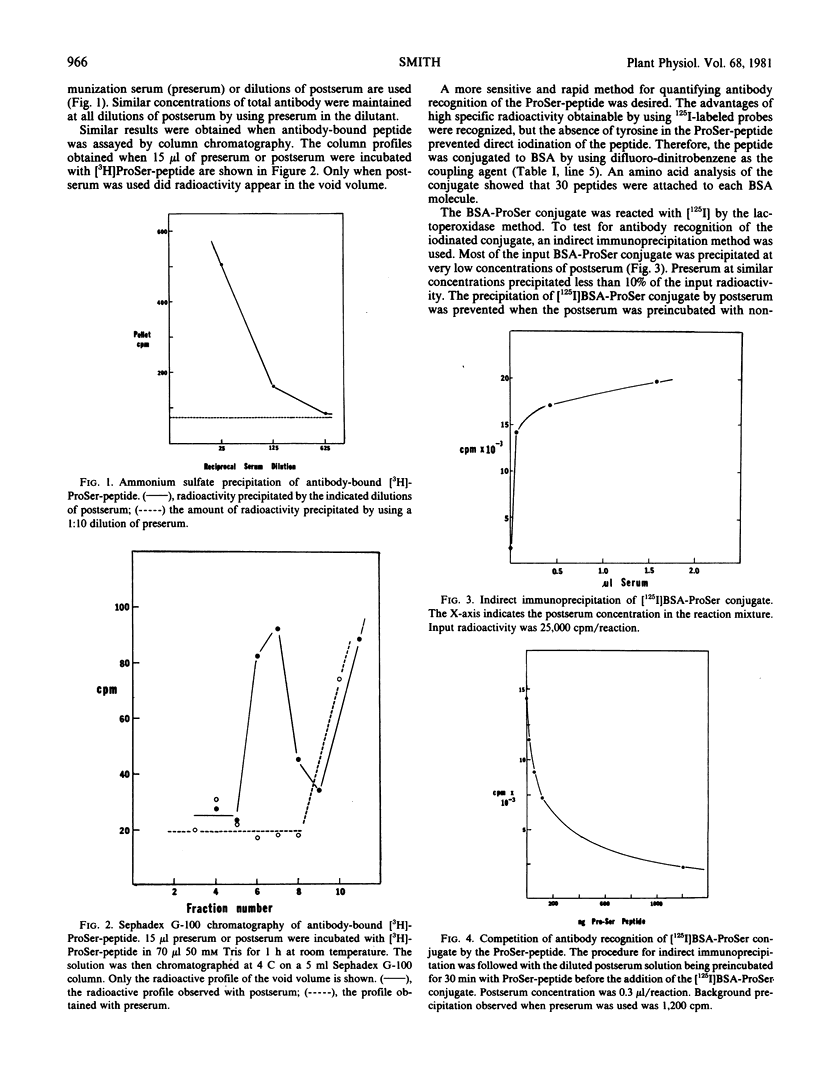

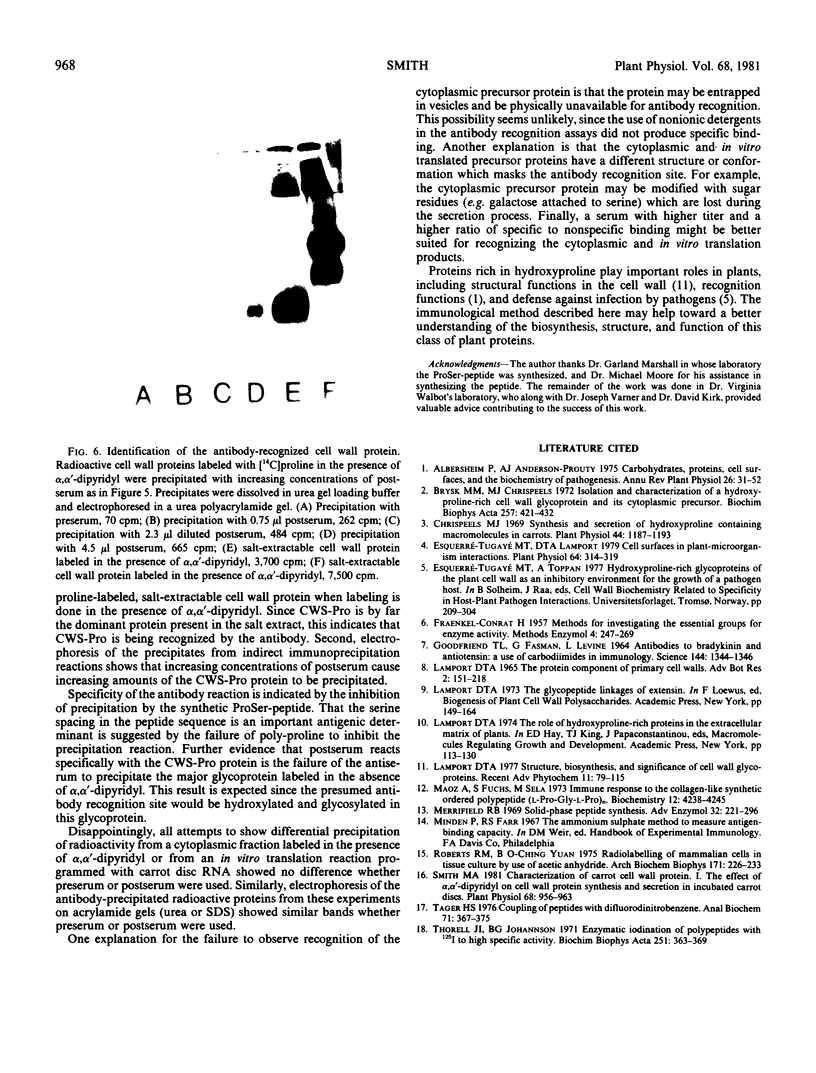
Images in this article
Selected References
These references are in PubMed. This may not be the complete list of references from this article.
- Brysk M. M., Chrispeels M. J. Isolation and partial characterization of a hydroxyproline-rich cell wall glycoprotein and its cytoplasmic precursor. Biochim Biophys Acta. 1972 Feb 29;257(2):421–432. doi: 10.1016/0005-2795(72)90295-4. [DOI] [PubMed] [Google Scholar]
- Chrispeels M. J. Synthesis and secretion of hydroxyproline containing macromolecules in carrots. I. Kinetic analysis. Plant Physiol. 1969 Aug;44(8):1187–1193. doi: 10.1104/pp.44.8.1187. [DOI] [PMC free article] [PubMed] [Google Scholar]
- Esquerré-Tugayé M. T. Cell Surfaces in Plant-Microorganism Interactions: I. A Structural Investigation of Cell Wall Hydroxyproline-rich Glycoproteins Which Accumulate in Fungus-infected Plants. Plant Physiol. 1979 Aug;64(2):314–319. doi: 10.1104/pp.64.2.314. [DOI] [PMC free article] [PubMed] [Google Scholar]
- GOODFRIEND T. L., LEVINE L., FASMAN G. D. ANTIBODIES TO BRADYKININ AND ANGIOTENSIN: A USE OF CARBODIIMIDES IN IMMUNOLOGY. Science. 1964 Jun 12;144(3624):1344–1346. doi: 10.1126/science.144.3624.1344. [DOI] [PubMed] [Google Scholar]
- Lamport D. T. The role of hydroxyproline-rich proteins in the extracellular matrix of plants. Symp Soc Dev Biol. 1974;30(0):113–130. doi: 10.1016/b978-0-12-612973-1.50011-5. [DOI] [PubMed] [Google Scholar]
- Maoz A., Fuchs S., Sela M. Immune response to the collagen-like synthetic ordered polypeptide (L-Pro-Gly-L-Pro)n. Biochemistry. 1973 Oct 9;12(21):4238–4245. doi: 10.1021/bi00745a031. [DOI] [PubMed] [Google Scholar]
- Merrifield R. B. Solid-phase peptide synthesis. Adv Enzymol Relat Areas Mol Biol. 1969;32:221–296. doi: 10.1002/9780470122778.ch6. [DOI] [PubMed] [Google Scholar]
- Roberts R. M., Yuan B. O. Radiolabeling of mammalian cells in tissue culture by use of acetic anhydride. Potential value for studying the dynamics of protein turnover in living cells. Arch Biochem Biophys. 1975 Nov;171(1):226–233. doi: 10.1016/0003-9861(75)90027-2. [DOI] [PubMed] [Google Scholar]
- Smith M. A. Characterization of Carrot Cell Wall Protein : I. EFFECT OF alpha, alpha'-DIPYRIDYL ON CELL WALL PROTEIN SYNTHESIS AND SECRETION IN INCUBATED CARROT DISCS. Plant Physiol. 1981 Oct;68(4):956–963. doi: 10.1104/pp.68.4.956. [DOI] [PMC free article] [PubMed] [Google Scholar]
- Tager H. S. Coupling of peptides to albumin with difluorodinitrobenzene. Anal Biochem. 1976 Apr;71(2):367–375. [PubMed] [Google Scholar]
- Thorell J. I., Johansson B. G. Enzymatic iodination of polypeptides with 125I to high specific activity. Biochim Biophys Acta. 1971 Dec 28;251(3):363–369. doi: 10.1016/0005-2795(71)90123-1. [DOI] [PubMed] [Google Scholar]



